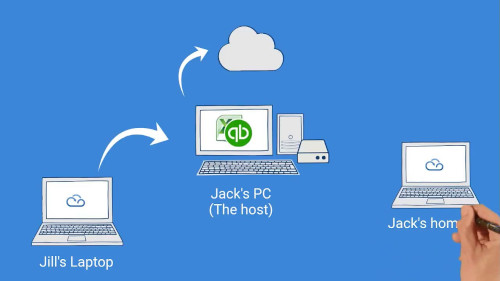We can’t dismiss the fact that coronavirus has changed offices forever.
Remote work is now the order of the day, and people have now gotten over the hang-ups. The workplace has gotten the cake of the COVID-19 disruption. Interestingly, it has taken a pandemic to shift companies’ views on remote and flexible work schedules.
Industries that never thought of going remote now have no option but to get in line. Take a look at the legal sector, law firms, courts, and their staff having a first-hand remote working environment.
The economy can’t stay closed forever. And companies have to have a safe return-to-work policy for when the economy opens up.
The densely packed open-floor plans are not an option as we have to maintain social distance. Offices have proved to be a headache as the virus loves to feed on masses.
We might not be sure as to when employees will be back to work. However, we are sure the workplaces will be different. Offices can’t have a natural death, but they have to evolve. The same way our habits have changed so will the way we work.
Already, CEOs like Jes Staley at Barclays and James Gorman at Morgan Stanley have raised questions on their pre-pandemic office spaces. Both of them agree it’s only logical to save a few bucks on their biggest expense. Their now remote employees have business processes and operations running successfully.
One trend that is on the rise is the demand for virtual offices. Companies have to generate revenue while employees aren’t going into their offices.
What is a virtual office?
It is a flexible workspace that offers businesses space and technology without them owning or leasing the space. They give businesses a physical mailing address, mail management services, and a meeting room. Well, a meeting room is out of the question, thanks to COVID-19.
Companies may not go back to renting out space as they have learned work can be done from any location. However, they will still need a physical address to remain reputable and credible. Not forgetting you might not be available 24/7 to receive your mail.
Also, no one wants to use their home address on their company website. There are so many reasons against it, but let’s go with one safety.
Can businesses hire out virtual offices?
Business centers can hire their ‘zip codes’ and make a steady income from it. You can charge the virtual office space depending on how prime the business address is. During the pandemic, additional income would do your business some good. A virtual office service can provide a steady and growing revenue that you can rely on.
What will workplaces look like post-COVID?
Little emphasis put on the employee’s location.
The pandemic has evidenced that a large number of office goers can work from home. It has proven that telecommuting and flexible work schedules are possible. Organizations will start recruiting based on a person’s ability to work remotely, not the distance they are from the office.
Review of remote work policies and data security
As people continue to work from home, companies have to set proper infrastructure to ensure they can access everything they need for maximum productivity. Cloud technologies like remote desktops and remote access have provided a perfect solution to businesses.
Remote work comes with new policies on how companies conduct business. For businesses to ensure continuity and profitability, they need to review their policies to fit into the new normal.
In all these, data security is key to maintaining confidential and private information. Cybercrime and hacking are on the rise, thanks to technology. Systems have to be put in place to prevent any accidents from occurring.
More priority to health, safety, and overall wellbeing.
Currently, many companies are already creating mental and physical awareness among their employees. However, the pandemic has exposed a healthy and safety gap in offices. From people working closely together to hand-operated sinks, lack of sanitizers shared meetings, and eating areas, among others, are the perfect environment for the spread of viruses.
So much work will need to be put in creating post-pandemic workspaces. The cubicles might be going higher for employees to be more comfortable. Desks placed further apart to keep a social distance. Fewer people will come to work every day to create more space.
Organizations will have to ensure their employees can wash their hands, the surfaces are decontaminated, and social distancing is practiced.
Business culture and flexibility will be used to measure company success.
Weaknesses in an organization are exposed in times of crisis. To remain connected while working remotely needs team members to be cohesive and committed to achieving their goals. Challenging times need remarkable leadership and management skills to help everyone overcome challenges.
COVID-19 has put the company’s flexibility to the test as they have to adapt to remote working conditions and new communication methods quickly.
The management has to embrace new best practices. For instance, result-based rather than time-based performance. A high level of trust is also shared between the team and managers to keep the channels of communication open.
In Conclusion
Nancy Dubuc, Vice Media Group CEO in an interview with Business Insider, said, “We used to joke about meetings that could have been emailed, but now we’ll wonder why we can’t just do them in our pajamas with our pets on video conference. There’s a balance, of course, because some work is more productive and better done in person, but it will never need to be five days a week, all day every day again.”
As companies continue to create remote work models, the office, as we know it will change. Most business leaders have stated they’ll cut back on real estate space, not scrap it off entirely.
But companies are gathering the tools they need to run a virtual office model. More employees will demand flexible or work from home schedules after the pandemic. And there will be a considerable shift towards embracing some form of the virtual office model.
Is it the birth of the virtual office revolution?





